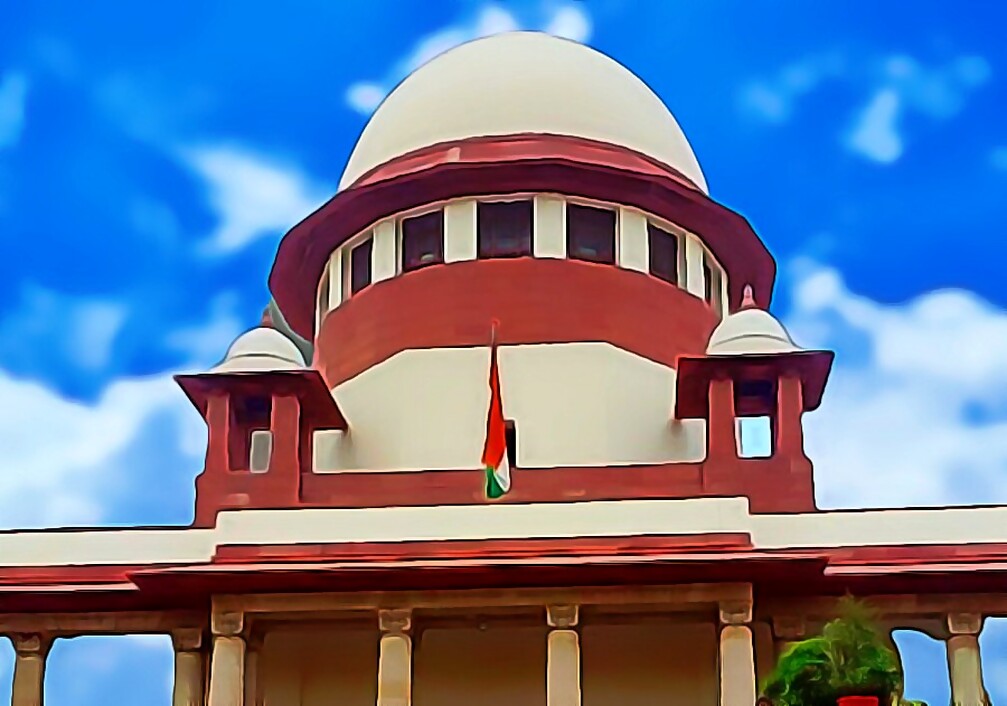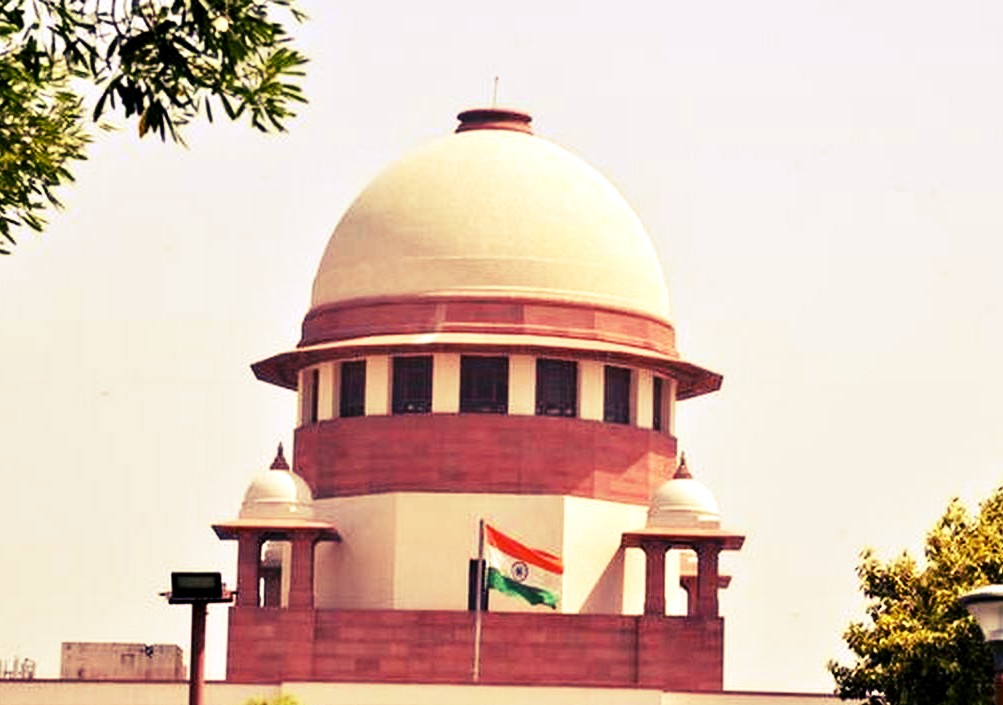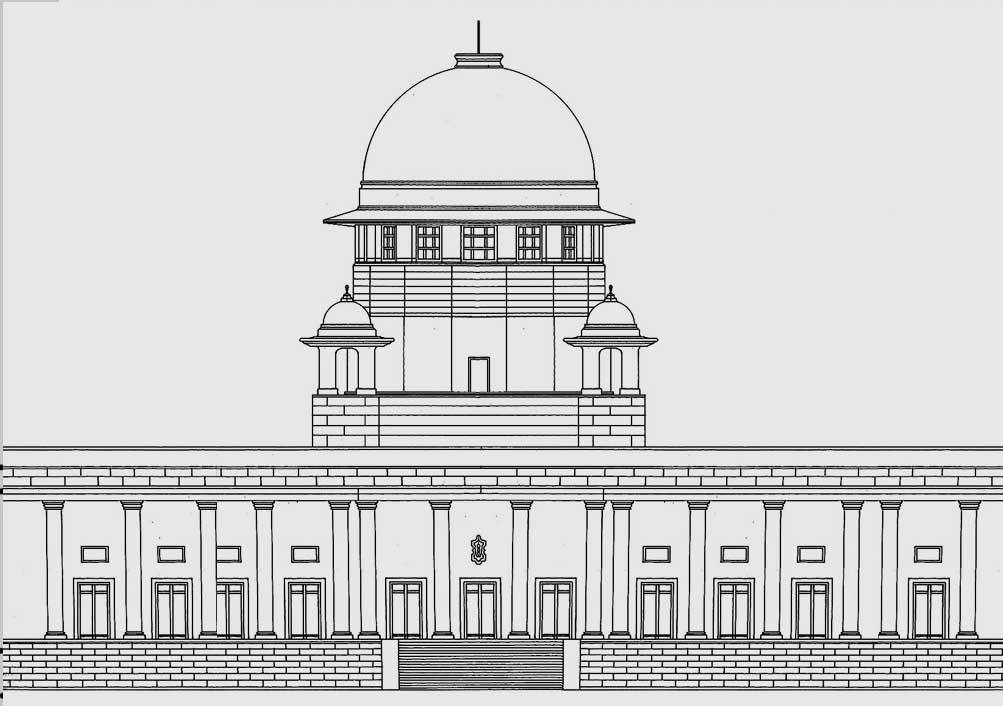Top Court quashes murder convict’s life sentence in light of significant discrepancies in evidence of eye-witnesses regarding identity of assailant who actually shot victim
Justices B.R. Gavai and Sandeep Mehta [07-05-2024]

Read Order: JAGVIR SINGH v. STATE OF U.P [SC- CRIMINAL APPEAL NO(S). 3684 OF 2023]
Tulip Kanth
New Delhi, May 8, 2024: In a murder case where the so-called eye-witnesses were the closest relatives of the victim and neither of them had actually seen the gunshots being fired at the deceased, the Supreme Court has acquitted a murder convict sentenced to life.
The first informant-Ram Naresh(PW-5) gave a written report at the Police Station alleging that his sister, brother-in-law and nephew- Sanju(deceased) were residing nearby his house in village Gokulpur for the last 15 years and one day the accused Omkar came and asked Sanju(deceased) to remove a water tank from the land of the accused, to which, Sanju(deceased) objected. The accused Omkar armed with a rifle along with Jagvir Singh(appellant herein) armed with a country made pistol climbed on the roof of house of accused Omkar and exhorted the two accused(Durvin and Sobran) to surround Sanju(deceased). Accused Omkar and Jagvir fired shots at Sanju(deceased) from the roof of Omkar’s house.
On hearing the noise, Ram Naresh-first informant(PW-5) and Ram Prakash(PW-1) rushed to the courtyard and found injured-Sanju trying to step down, but he rolled down near the staircase and died in the courtyard. All four accused ran away from the spot after firing gunshots.On the basis of the said report, FIR came to be registered against the four accused.
The appeal before the Top Court was filed against the judgment passed by the Division Bench of the Allahabad High Court whereby the Criminal Appeal preferred by the appellant for challenging the judgment of the Trial Court was rejected. By the said judgment, the trial Court convicted the accused appellant and accused Omkar for the offences punishable under Section 302 read with Section 34 of the Indian Penal Code, 1860 while acquitting accused Sobran and Durvin from the charges. The accused appellant as well as accused Omkar were sentenced to undergo imprisonment for life.
On a perusal of the FIR, the Division Bench of Justice B.R. Gavai and Justice Sandeep Mehta opined that the first informant-Ram Naresh(PW-5) categorically mentioned in the report that on hearing the gunshots, he and his brother-in-law Ram Prakash(PW-1) climbed on the top of the roof and saw that Sanju(deceased) was injured, and while he was climbing down the staircase, he rolled down, fell in the courtyard near the stairs and died. This fact was even admitted by Ram Naresh(PW-5) during this cross-examination.
The Bench also held that the claim made by Ram Prakash(PW-1) in his evidence that he and Ram Naresh(PW-5) had reached the roof of the house from where they saw Omkar firing at Sanju was a sheer piece of concoction. Furthermore, the conduct of the eye-witnesses Ram Prakash(PW-1) and Ram Naresh(PW-5) was totally unnatural. Both the witnesses claimed to have seen Sanju(deceased) being chased and surrounded by accused Durvin and Sobran. Despite that, neither of them made an attempt to save Sanju from these assailants or to at least raise a hue and cry so that the neighbours could be apprised about the incident. Neither of the witnesses made an attempt to intervene or to shield Sanju.
Noting that both the witnesses claimed that they saw accused Omkar and accused appellant Jagvir Singh rushing towards the house of Omkar and climbing the roof thereof, the Bench held that there was no rhyme or reason as to why, Sanju would also climb up the roof of Ram Naresh’s house and take the risk of exposing himself to the offensive intents of the accused persons.
It was also noticed that the so-called eye-witnesses, Ram Prakash(PW-1) and Ram Naresh(PW-5) were the closest relatives of the victim. They allegedly saw the fatal assault on the victim and yet did not take any step to save him from the assault. “If these witnesses PW-1 and PW-5 had actually seen the assault, their reaction and conduct does not match up with the reaction expected from them. Their conduct is highly unnatural, and we find it difficult to accept their presence at the crime scene”, the Bench opined while also adding, “In this background, we have no hesitation in holding that the so called eye witnesses, PW-1 and PW-5, who were unquestionably standing or moving at the ground level could not have seen the gunshots being fired at Sanju(deceased) from the roof of Omkar’s house.”
Neither of the so-called eye witnesses i.e., Ram Prakash(PW-1), Sultan Singh(PW- 2) and Ram Naresh(PW-5) had actually seen the gunshots being fired at Sanju(deceased). The Bench further stated that the entire sequence of events as narrated by prosecution witnesses did not inspire confidence.
Sanju received a single gunshot injury which proved fatal. Considering the significant disparities and discrepancies in the evidence of Ram Prakash(PW-1) and Ram Naresh(PW-5) regarding the identity of the assailant who actually fired at Sanju(deceased), the Bench opined that the conviction of accused appellant Jagvir Singh on the basis of such flimsy and wavering evidence is not at all justified.
“The trial Court as well as the High Court committed glaring error while holding that Ram Prakash(PW-1), Sultan Singh(PW-2) and Ram Naresh(PW-5) were eyewitnesses to the incident and that they saw the accused appellant along with accused Omkar firing at Sanju(deceased). These findings are unsustainable on the face of the record in view of the analyses and discussion of evidence made above”, the Bench held.
Thus, allowing the appeal, the Bench acquitted the appellant by giving him the benefit of doubt.
Sign up for our weekly newsletter to stay up to date on our product, events featured blog, special offer and all of the exciting things that take place here at Legitquest.




Add a Comment